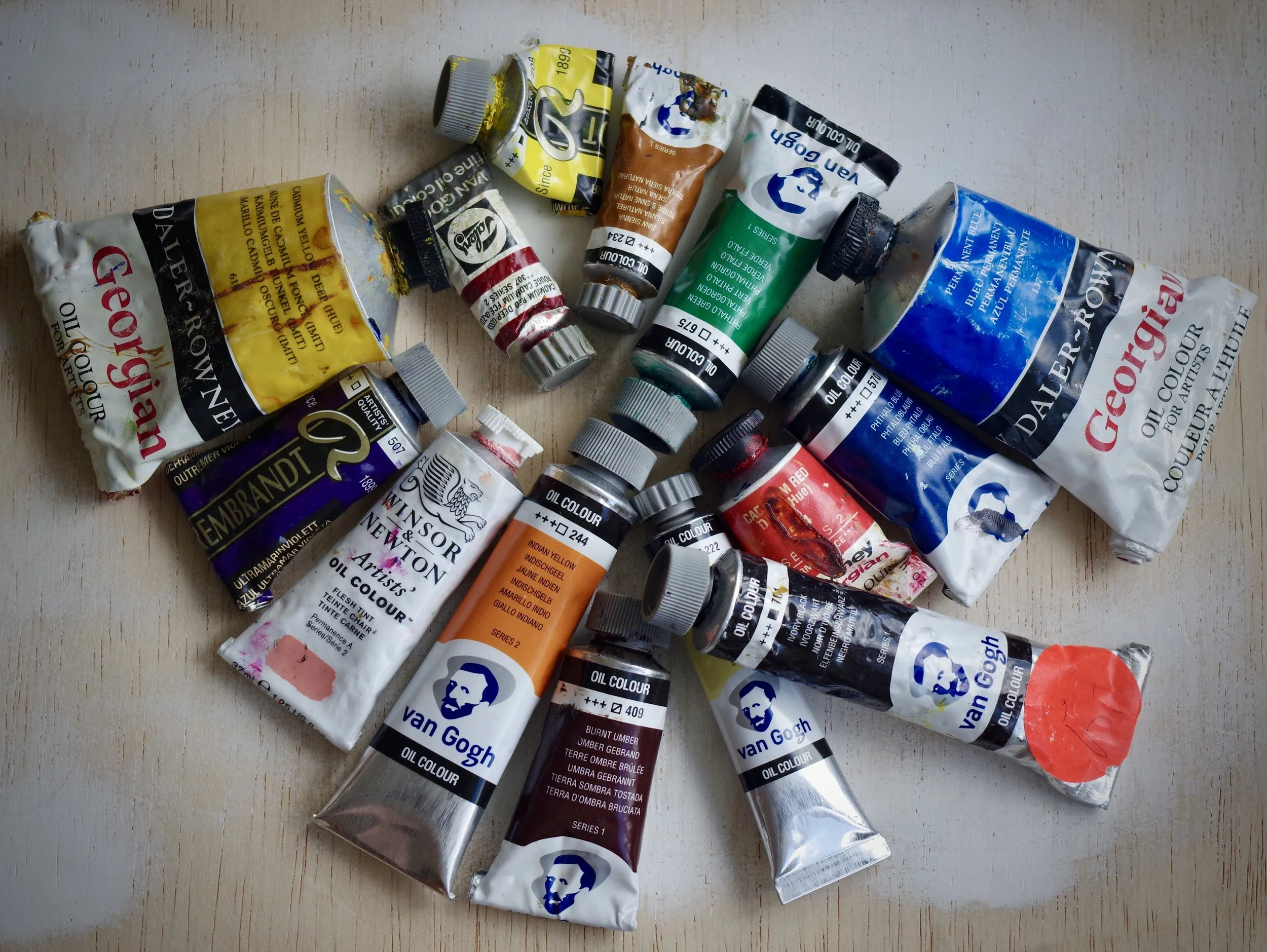Why Oil Painting?
I’ve always enjoyed looking at paintings of all kinds. Each medium has its own charm and beauty, but oil paint always struck me as having the edge over the others. The colours were so rich and deep, and never seemed to lose these qualities even if the paintings were hundreds of years old. In 2016 I had the joy of seeing the Hieronymus Bosch exhibition in ‘s-Hertogenbosch. All of the oil paintings on display were over 500 years old, but had lost nothing of their sharp details or brilliant colours. They were mostly painted on oak boards, a surface few would consider suitable today, but painting surfaces or supports is a topic for another day.
Even as a boy who like drawing and painting, I could never imagine myself using oil paints; there was too much mystique attached to them. They were meant for the artistic elite, and could only be mastered following years of study, they required complex mediums and painting surfaces, and besides, they were prohibitively expensive.
When I resolved to take up painting following my retirement, I found that none of this was true. But there were still comparisons and choices to be made. Would water colours, gouache or perhaps acrylics be more suitable for me? I ruled out water colour as it seemed rather unforgiving, offering little scope to correct mistakes, and I expected to make a lot of mistakes. It boiled down to oils or acrylics, and I tried them both.
The big difference between the two is the time they each take to dry. Acrylics dry very quickly, which can be both an advantage and a disadvantage, and oils dry very slowly, which can also be both an advantage and a disadvantage. I found that acrylic paints dried while I was still working with them, mixing them and moving them around on the canvas, and once dry, it was difficult to rework them. I also found that the end product just didn’t look as classy as oils.
Oil paints dry more slowly, though drying times vary from colour to colour. The brown earth colours are particularly fast drying; white and the lighter colours are particularly slow. Squeeze some burnt umber onto your palette and it will be dry by the next day if you don’t use it all. Cadmium yellow on the other hand will be usable for a few days. The slowness of drying means that the paints can be moved around, mixed or blended for long periods, which suits me as I’m a bit slow myself. One disadvantage is that, if you like to work in ‘wet on dry’ layers you’ll need to wait a long time before the next layer can be applied. One way around this is to have two or three paintings on the go at the same time, which brings us to the other disadvantage, the need to have somewhere for the paintings to stand while they’re drying. So oil painting will take up more room than other kinds of paint. Few of us have an art room or studio, but you’ll need at least a corner of a room where the drying paintings can stand undisturbed. (There are mediums that can be mixed in with the paints that will speed up or retard the drying process, but these are not essential.)
So oil paints suit my personality and way of working: slow, relaxing, easy to change or correct. And I just enjoy the experience of squeezing the pure, bright colours onto my palette, mixing them and applying them to whatever I’m painting on; I don’t think any other medium could be quite so sensuous. I may diversify in the future, but I think I’ll always love oil paints the best.
